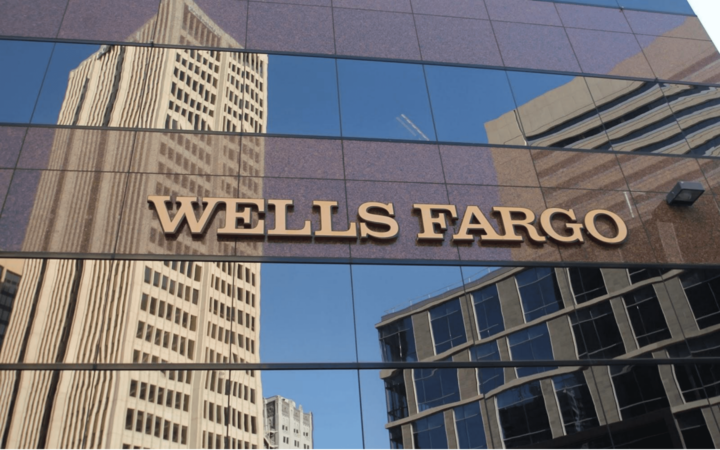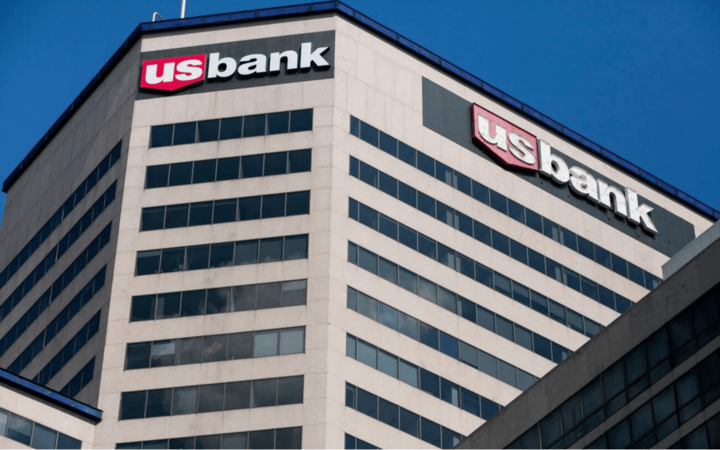The banking sector has faced many challenges in 2023, from rising interest rates to a banking crisis that shook some regional banks. However, some high-quality bank stocks have emerged as winners in this environment, delivering impressive earnings growth and shareholder returns. Investing in bank stocks can offer many benefits, such as steady dividend income, capital appreciation, and protection from inflation and taxes. Bank stocks also serve an important societal need that will never go away and have relatively simple business models to understand.
JPMorgan Chase & Co. (NYSE: JPM) - Largest U.S. Bank by Assets and Deposits

Source: Unsplash
JPMorgan Chase is a highly diversified financial services company with operations in 60+ countries and assets totaling nearly $4 trillion. It offers a wide range of products and services to individuals, businesses, governments, and institutions, with a strong brand and global network. In the past year, JP Morgan stock has risen by 40% from $105.93 to $148.15, outperforming the S&P 500 and S&P 500 Financials sector indices.
JPMorgan Chase's Financial Performance and Growth Potential
JPMorgan Chase & Co.(NYSE: JPM) reported strong results for the second quarter of 2023, with a net income of $14.5 billion, up 67% from the same period last year. The firm also achieved a return on tangible common equity of 25%, well above its cost of capital. The firm's revenue increased by 34% to $42.4 billion, driven by higher net interest income, robust investment banking fees, and solid growth in asset and wealth management. The firm's performance got boosted by acquiring certain assets and liabilities of First Republic Bank, which added $2.4 billion to net income and $2.7 billion to revenue in the quarter. The acquisition also expanded the firm's presence in the affluent and high-net-worth segments, as well as in key markets such as California and New York. The firm expects to realize significant synergies and cross-selling opportunities from integrating the First Republic.
The firm also demonstrated its resilience and adaptability in a challenging environment as it navigated the uncertainties related to inflation, interest rates, fiscal policy, and geopolitics. The firm maintained a strong balance sheet, with $1.4 trillion in cash and marketable securities, a CET1 capital ratio of 13.8%, and a supplementary leverage ratio of 5.8%. The firm also distributed $4.7 billion to shareholders through dividends and share repurchases in the quarter.
JPMorgan Chase & Co. is well-positioned to capitalize on the opportunities arising from the ongoing recovery of the U.S. economy, as well as the growing demand for its products and services globally. The firm continues to invest in innovation, technology, talent, and social responsibility, striving to deliver long-term value to its customers, clients, communities, and shareholders.
Recent News and Market Trends Impacting JPM Stock
- JPMorgan Chase faces legal disputes over Treasury securities auction manipulation and precious metals market spoofing.
- The bank bought most of First Republic Bank's assets and liabilities from the FDIC on May 1, 2023, to boost its wealth strategy and expand its venture capital and technology clientele in California. The deal also secured all deposits of First Republic Bank customers.
- JPMorgan Chase also invests in technology and innovation, launching new products and services such as Chase Business Complete Banking, Chase First Banking, and JPM Coin.
- The bank is expanding its presence in new markets, such as India, where it opens offices in Mumbai and Bengaluru.
Risks and Opportunities for Traders Considering JPM Stock
JPMorgan Chase (JPM) faces substantial costs and compliance burdens due to numerous laws and regulations, leading to significant fines and settlements for legal issues. Its international operations get exposed to risks from political instability, trade disputes, and economic sanctions, impacting performance in specific regions. Intense competition from traditional financial institutions and non-traditional players threatens to disrupt the industry and erode the bank's market share.
An advantage of trading JPM stock is the robust risk management framework maintained by the bank across its business segments. Investments in enhancing risk culture, governance, policies, and systems bolster its risk control capabilities. JPM's leading position in the wealth management industry through the Global Wealth & Investment Management segment presents opportunities with comprehensive solutions for high-net-worth clients. The bank's commitment to digital transformation, boasting over 40 million active digital users, fosters improved customer experience, operational efficiency, and innovation.
Bank of America (NYSE: BAC) - Second Largest U.S. Bank After Consumer Deposits

Source: Pexels
Bank of America (BAC) is a leading U.S. consumer bank, boasting the largest deposit base and second-largest loan portfolio among U.S. banks. With a robust digital banking platform and four profitable segments, it serves clients across various industries and geographies. BAC's prudent capital management strategy has enabled it to absorb potential losses, support growth initiatives, and deliver shareholder returns. Over the last year, the value of Bank of America stock decreased by about 14.7% from $36.25 to $30.93, while both the S&P 500 index increased by 6% and the S&P 500 Financials sector index rose by 1.5%.
Key Financial Indicators and Performance Metrics
Bank of America (BAC) reported impressive results for the second quarter of 2023, with net income of $7.4 billion, or $0.88 per diluted share, up 19% from the same period last year. The bank also achieved a return on tangible common equity of 15.5%, well above its cost of capital. The bank's revenue increased by 11% to $25.2 billion, driven by higher net interest income, robust investment banking fees, and solid growth in asset and wealth management.
The bank's performance got supported by the ongoing recovery of the U.S. economy, as well as its diversified and global business model. The bank saw strong client activity and market share gains across its four business segments: Consumer Banking, Global Wealth and Investment Management, Global Banking, and Global Markets. The bank also demonstrated its resilience and adaptability in a challenging environment as it navigated the uncertainties related to inflation, interest rates, fiscal policy, and geopolitics. The bank maintained a strong balance sheet, with $1.4 trillion in cash and marketable securities, a CET1 capital ratio of 11.6%, and a supplementary leverage ratio of 6.0%. The bank also distributed $4.7 billion to shareholders through dividends and share repurchases in the quarter.
Recent News and Developments Affecting BAC Stock
- Bank of America recently announced that it will increase its quarterly dividend by 17% to $0.21 per share, starting in the third quarter of 2023. The bank also announced that it will repurchase up to $25 billion of its common stock over the next four quarters, subject to market conditions and regulatory approvals.
- The bank also announced that it will invest $1.25 billion over the next five years to advance racial equality and economic opportunity in the U.S. The bank will focus on four areas: health, jobs/reskilling, small business, and affordable housing.
- Bank of America is facing some legal challenges in various markets, such as a lawsuit from the U.S. Department of Justice over its role in the sale of mortgage-backed securities during the financial crisis, a class action lawsuit from customers over its overdraft fees, and a probe from the U.K. Financial Conduct Authority over its compliance with anti-money laundering rules.
Potential Risks and Opportunities for Traders
BAC stock performance depends on several factors, such as the economy, interest rates, competition, and regulation. These factors could positively or negatively impact its revenue, earnings, market share, and profitability. One risk factor is the credit rating downgrade of 10 smaller regional banks by Moody's, which also said it was reviewing the ratings of six large banks, including BAC. Moody's cited the Fed's interest rate hikes as a challenge for the banking sector, as they could increase the funding costs and reduce the economic capital of the banks.
A lower credit rating could make it more complex and expensive for BAC to borrow money and issue debt. On the other hand, one opportunity for BAC is the increase in 401(k) balances among its customers, which rose by 9.6% in 2023. This could boost BAC's wealth management and retirement services, a significant source of fee income for the bank. Additionally, BAC could benefit from its digital transformation initiatives, which aim to enhance its customer experience and operational efficiency.
Wells Fargo (NYSE: WFC) - Competitive Mortgage Lending and Processing Business

Source: Unsplash
Wells Fargo, a prominent U.S. financial services company, boasts over $1.9 trillion in assets and 70 million customers. It offers a wide range of banking, investment, mortgage, and consumer finance products to individuals, businesses, and governments. With a leading position in the U.S. mortgage market and a diverse business mix, Wells Fargo serves clients globally and maintains a solid capital position. In the past year, the value of Wells Fargo stock dropped around 4.4% from $45.75 to $43.74 , while the S&P 500 and the S&P 500 Financials sector index saw a 6% and 1.5% increase respectively.
Wells Fargo's Financial Health and Profitability
Wells Fargo reported its second quarter 2023 net income of $4.9 billion, or $1.25 per diluted share, on Friday, July 14, 2023. The company's revenue increased 20% from the second quarter of 2022 to $20.5 billion, driven by higher net interest income and noninterest income. The company's return on assets was 1.05%, return on equity was 11.4%, and return on average tangible common equity was 13.7%. The company also repurchased $4 billion of common stock in the second quarter of 2023 and expects to increase its third quarter of 2023 common stock dividend to $0.35 per share, subject to board approval.
The company's performance was strong across its four reportable operating segments: Consumer Banking and Lending, Commercial Banking, Corporate and Investment Banking, and Wealth and Investment Management. The company benefited from higher interest rates, higher loan balances, more robust treasury management results, higher trading revenue in equities and fixed-income products, and lower impairments in its affiliated venture capital and private equity businesses.
Recent Events Influencing WFC Stock Performance
- Wells Fargo recently announced that it will increase its quarterly dividend by 100% to $0.20 per share, starting in the third quarter of 2023. The bank also announced that it will repurchase up to $18 billion of its common stock over the next four quarters, subject to market conditions and regulatory approvals.
- Wells Fargo also announced selling its asset management business to GTCR LLC and Reverence Capital Partners LP for $2.1 billion. The deal should close in the second half of 2023. The bank said the sale will allow it to focus on its core banking businesses and simplify its operations.
- Wells Fargo is facing some legal challenges in various markets, such as a lawsuit from the U.S. Department of Justice over its role in the sale of mortgage-backed securities during the financial crisis, a class action lawsuit from customers over its unauthorized account openings scandal, and a probe from the Office of the Comptroller of the Currency over its risk management practices.
Potential Risks and Opportunities for Traders
Wells Fargo (WFC) is one of the largest and most influential banks in the United States, but it has faced several challenges and controversies in recent years. The bank has gotten involved in various scandals, such as unauthorized account openings, record-keeping failures, and consumer abuses. These issues have damaged its reputation, resulted in regulatory penalties, and eroded its profitability. However, the bank has also taken steps to improve its governance, culture, and risk management, as well as to invest in its digital capabilities and customer experience.
For traders of WFC stock, there are both risks and opportunities to consider. On the one hand, the bank faces headwinds from a competitive and uncertain environment, as well as from ongoing legal and regulatory scrutiny. The bank may also face pressure from shareholders and activists who demand more accountability and transparency from its management. On the other hand, the bank has a strong balance sheet, a diversified business mix, and a loyal customer base. The bank also benefits from a favorable interest rate outlook, a robust economic recovery, and a generous capital return policy. The bank recently announced a $30 billion share buyback program and a dividend increase to 35 cents per share. These actions reflect the bank's confidence in its prospects and commitment to reward its shareholders.
Citigroup (NYSE: C) - Leading Global Bank With Exposure to High Growth Markets

Source: Alamy
Citigroup is a leading global financial services company with assets exceeding $2.3 trillion and a vast customer base of over 200 million. It operates in 160+ countries, offering diverse banking, investment, and consumer finance products to individuals, businesses, governments, and institutions. With a strong presence in emerging markets, particularly in Asia and Latin America, Citigroup excels in cross-border payments, trade finance, and foreign exchange. The company maintains a well-balanced business mix and a solid capital position, and delivers shareholder returns. In the past year, Citigroup stock dropped by around 18.4% from $54.07 to $44.10, underperformed both the S&P 500 index (6% rise) and the S&P 500 Financials sector index (1.5% rise).
Citigroup's Financial Performance and Growth Prospects
Citigroup, one of the largest banking institutions in the world, reported its second quarter 2023 results on July 14, 2023. The company posted a net income of $2.9 billion, or $1.33 per diluted share, on revenues of $19.4 billion. This was a decrease of 36% in net income and 1% in revenues compared to the same period last year. The lower results were mainly due to declines in Markets, Investment Banking, and Global Wealth Management, as well as the impact of exited markets and wind-downs within Legacy Franchises. The company also faced higher expenses, higher cost of credit, and a higher effective tax rate.
However, Citigroup also showed signs of resilience and growth potential in the challenging environment. The company's Services businesses, which include Treasury and Trade Solutions and Securities Services, delivered strong revenues, with both segments growing by 15%. The company also saw loan growth across US Personal Banking, driven by higher card balances and retail services. Moreover, the company maintained a robust capital position, with a common equity tier 1 capital ratio of 13.3%, and returned $2 billion to common shareholders in the form of dividends and repurchases.
Citigroup's second-quarter 2023 results reflect the mixed effects of the macroeconomic backdrop, the competitive landscape, and the ongoing transformation of its business model. While the company faced some headwinds in some segments, it also demonstrated its strength and diversity in others. Citigroup's future performance will depend on how well it can execute its strategy, adapt to changing market conditions, and leverage its global network and expertise.
Recent News and Market Factors Impacting C Stock Value
- Citigroup recently announced that it will increase its quarterly dividend by 50% to $0.24 per share, starting in the third quarter of 2023. The bank also announced that it will repurchase up to $12 billion of its common stock over the next four quarters, subject to market conditions and regulatory approvals.
- Citigroup also announced that it will sell its asset management business in India and China to BlackRock Inc. for $2.5 billion. The deal should close in the second half of 2023. The bank said the sale will allow it to focus on its core banking businesses and simplify its operations.
- Citigroup is facing some legal challenges in various markets, such as a lawsuit from the U.S. Department of Justice over its role in the sale of mortgage-backed securities during the financial crisis, a class action lawsuit from customers over its overdraft fees, and a probe from the European Commission over its foreign exchange trading practices.
Risks and Opportunities for Traders
Citigroup Inc. stock's 2023 trajectory reflects economic ambiguity and mixed segment performance. Risk factors include a substantial Q2 2023 decline in Citigroup's net income and earnings per share compared to the previous year. Revenue reductions in its market, investment banking, and wealth management sectors, coupled with elevated operational expenses and taxes, have contributed to this decline. Citigroup's ongoing major overhaul, encompassing exiting 13 consumer markets, divesting retail banking operations in China and India, and downsizing the workforce by 10%, seeks to enhance efficiency and profitability. However, executing this plan presents formidable costs and execution risks. Furthermore, the company gets confronted by regulatory and legal challenges, including a $400 million settlement to address risk management inefficiencies and potential penalties from other regulatory bodies for market manipulation, like the European Commission, the UK Financial Conduct Authority, and the Hong Kong Monetary Authority.
Conversely, opportunities arise from a 12% YoY growth in Citigroup's net interest income for Q2 2023, supported by higher interest rates, reduced deposit costs, and loan portfolio expansion. Additionally, the firm's treasury and trade solutions revenue grew by 7% YoY in Q2 2023, furnishing corporate and institutional clients with cash management, trade finance, securities services, and commercial cards, benefiting from a robust global network spanning 160 countries and encompassing 90% of the Fortune Global 500. Moreover, Citigroup retains a formidable capital position, boasting an 11.7% common equity tier 1 ratio as of June 30, 2023. Approval from the Federal Reserve in June 2023 prompted the resumption of the company's share repurchase initiative, targeting $2.2 billion worth of shares in Q3 2023.
U.S. Bancorp (NYSE: USB) - Fifth Largest U.S. Bank With Regional Focus

Source: Alamy
U.S. Bancorp, a prominent U.S. financial services company, holds assets exceeding $700 billion and serves over 18 million customers. Operating primarily in the Midwest and West Coast, it offers a comprehensive range of banking, investment, mortgage, trust, and payment services products. With a widespread presence in 26 states through 2,700 branches and 4,400 ATMs, U.S. Bancorp caters to diverse segments and industries. The company maintains a well-diversified business mix and a solid capital position and delivers shareholder returns. In the past year, USB stock has fallen by approximately 21.1% from $49.08 to $38.72.
U.S. Bancorp's Financial Health and Stability
U.S. Bancorp, the parent company of U.S. Bank, reported strong financial results for the second quarter of 2023, reflecting its diversified business model, disciplined expense management, and prudent risk management. The company posted a net income of $2.2 billion, up 12.8% from the previous quarter and 23.6% from the same quarter of the previous year. The company also achieved a return on average assets of 1.47%, a return on average common equity of 15.9%, a net interest margin of 3.12%, and an efficiency ratio of 53.4%. These metrics demonstrate the company's profitability, efficiency, and resilience in a challenging economic environment.
U.S. Bancorp also showed solid growth potential in the second quarter of 2023, driven by its strategic initiatives, customer loyalty, and market expansion. The company completed the acquisition of MUFG Union Bank (MUB), which added $132 billion in assets, $97 billion in deposits, and $58 billion in loans to its balance sheet. The acquisition also enhanced the company's presence and capabilities in the West Coast and other attractive markets. The company also continued to invest in its digital transformation, payment services, wealth management, and commercial products, which generated higher noninterest income across various segments. Furthermore, the company maintained a strong capital position, with a Basel III standardized CET1 ratio of 10.2%, well above the regulatory minimum of 4.5%. The company also returned $1.4 billion to shareholders through dividends and share repurchases in the second quarter of 2023.
Recent Events Influencing USB Stock Performance
- US Bancorp recently announced that it will increase its quarterly dividend by 10% to $0.46 per share, starting in the third quarter of 2023. The bank also announced that it will repurchase up to $8 billion of its common stock over the next four quarters, subject to market conditions and regulatory approvals.
- US Bancorp also announced that it will acquire MUFG Union Bank's consumer banking business in the West Coast for $8 billion. The deal should close in the fourth quarter of 2023. The bank said the acquisition will enhance its scale and capabilities in attractive markets and create significant value for its shareholders.
- US Bancorp is facing some legal challenges in various markets, such as a lawsuit from the U.S. Department of Justice over its role in the sale of mortgage-backed securities during the financial crisis, a class action lawsuit from customers over its overdraft fees, and a probe from the Federal Reserve over its compliance with anti-money laundering rules.
Potential Risks and Opportunities for Traders
US Bancorp Stock (NYSE:USB) has been under pressure lately due to several factors. Moody's Investors Service, a credit rating agency, has placed US Bancorp under review for a downgrade, citing its rising deposit costs and increased use of wholesale funding. The bank has also faced challenges from the collapse of Silicon Valley Bank in March 2023, which triggered a wave of deposit withdrawals and heightened competition among regional banks. USB's net interest margin, a key measure of profitability, has turned negative in the first quarter of 2023, as the bank had to pay more to retain its customers.
However, US Bancorp also has some opportunities to improve its performance and outlook. The bank has a strong franchise in the Midwest and West regions, where it benefits from a loyal customer base and diversified revenue streams. The bank has also invested in digital transformation and innovation, which could help it attract new customers and reduce operating costs. Moreover, US Bancorp has a solid capital position and a conservative risk profile, which could help it weather the uncertain economic environment and potential credit losses. USB stock's dividend yield of 4.2% is also attractive for income-seeking investors.
Bullish Factors for Top 5 Bank Stocks
Several factors could support the bullish case for the top 5 bank stocks in the near future. Some of these factors are:
- Higher Interest Rates: The Federal Reserve has signaled that it will start tapering its bond-buying program soon and may raise interest rates as early as 2023 in response to rising inflation and economic growth. This could boost the net interest income and margins of banks, allowing them to charge more on loans and pay less on deposits.
- Strong Economic Growth: The U.S. economy should grow by 6% in 2023, according to the IMF, driven by the reopening of businesses, vaccination rollout, and fiscal stimulus. This growth could increase the demand for banking products and services, such as loans, deposits, payments, and wealth management. It may also improve credit quality and lower the bank's loan loss provisions, as borrowers are more likely to repay their debts.
- Cost-Cutting Initiatives: Banks have been implementing various cost-cutting measures, such as closing branches, reducing headcount, automating processes, and streamlining operations. These initiatives could help lower their expenses and improve efficiency ratios, which measure how well they use their resources to generate revenues.
- Growth in Digital Banking: Heavy investments in digital banking, such as online and mobile platforms, cloud computing, artificial intelligence, and data analytics, could help banks enhance customer experience, increase market share, diversify revenue streams, and reduce operational risks.
- Exposure to Growing Business Lines: Banks have exposure to some of the fastest-growing and most profitable business lines in the industry, such as treasury and trade solutions, securities services, wealth management, investment banking, and payment services. These business lines could provide stable and recurring revenues, high margins, and cross-selling opportunities.
- Resurgent Trading and Investment Banking: Banks could benefit from a rebound in trading and investment banking activities as market volatility, corporate deal-making, and capital raising pick up in the second half of 2023. Trading and investment banking revenues are typically cyclical and depend on market conditions and client demand.
- Improved Credit Quality: Significant improvement in credit quality has been observed in the past year, as banks released billions of dollars of loan loss reserves set aside during the pandemic. This reflects optimism about the economic recovery and the ability of borrowers to repay their loans, potentially boosting earnings and capital ratios.
- Regulatory Tailwinds: Banks could benefit from some regulatory tailwinds in the near future, such as the easing of capital requirements, relaxation of stress testing rules, and approval of dividend increases and share buybacks. These regulatory changes could enhance their financial flexibility and shareholder returns.
Trade Bank Stocks CFD with VSTAR
If you get interested in trading in bank stocks but do not want to own the actual shares, you can trade bank stocks CFD with VSTAR. CFD stands for contract for difference, which is a type of derivative that allows you to speculate on the price movements of an underlying asset without taking possession of it.
Trading bank stocks CFD with VSTAR has several advantages:
- You can trade with leverage up to 1:200, depending on the instrument. This means you can use a smaller capital to participate in more trading opportunities and potentially magnify your returns.
- You can trade with lower transaction costs and zero commission. This means you can keep more of your profits and minimize your losses.
- You can access global stock markets with a wide range of popular bank stocks. This means you can diversify your portfolio and take advantage of different market trends.
- You can trade with lightning-fast execution at the best market prices. This means you can enter and exit your trades quickly and smoothly without delays or slippage.
To start trading bank stocks CFD with VSTAR, you need to:
- Register an account with VSTAR online or through its mobile app
- Verify your identity and deposit funds into your account
- Choose your preferred bank stock CFD from its list of instruments
- Open a buy or sell position depending on your market view
- Monitor your position and close it when you want to take profit or cut loss
Conclusion
The banking industry is one of the most important and influential sectors in the financial markets. It offers many investment opportunities for traders who want to benefit from the innovation, growth, and success of both established and start-up banks. However, trading bank stocks also involves various risks that could have a positive or negative impact on their performance. Therefore, traders need to do their own research, analysis, and risk management before entering any trades.
If you are ready to trade bank stocks CFD with VSTAR, don't wait any longer. Start investing in bank stocks today!




